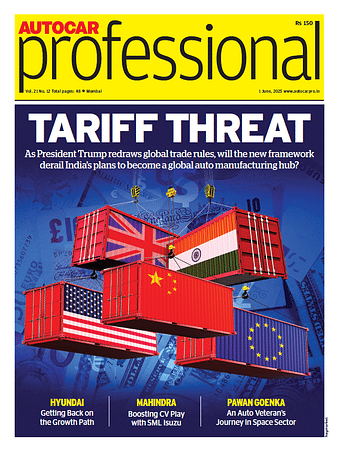China’s light vehicle market to seesaw in the near term: LMC Auto
According to global market intelligence provide LMC Automotive, China’s light vehicle (LV) market is likely to display a ‘seesaw’ effect in the near term.
According to global market intelligence provide LMC Automotive, China’s light vehicle (LV) market is likely to display a ‘seesaw’ effect in the near term. The recent performance of China’s LV market has failed to support the optimism which was fuelled by higher‐than‐expected growth achieved in 2013. The LV sales growth in March 2014 was lower than January‐February in both the passenger vehicle (PV) and the LCV sectors, leading to LV sales growth as a whole in Q1 2014 sliding below 10 percent.
With around 0.56 million LCVs being sold in March 2014, LCV sales saw a decrease of 3 percent on the previous year, dragging the YoY Q1 growth as a whole down to 0.7 percent, from 3.4 percent in January‐February. Even with a stronger sales momentum than LCVs, PV sales reached only 1.47 million units in the month. The YoY growth of 11 percent was still below the 13 percent achieved in January‐February.
Furthermore, according to LMC Auto, the SAAR (Seasonally Adjusted Annual Rate) has indicated that China’s LV market has failed to gather further sales momentum from a strong Q4 in 2013. After the selling rate peaked at 23.3 million units in November and December 2013, it proceeded to drop to 23.1 million units on average in Q1 2014, running consistently throughout each month of the quarter. Facing a currently flat selling rate and lower‐than‐expected sales growth, the future trend can be perceived more clearly, looking into the factors that drove the higher‐than‐expected growth in 2013. With a YoY LV sales growth of 12 percent and 16 percent registered in H1 and H2 of 2013 respectively, it could be judged that the higher‐than‐expected market performance actually took place in H2 2013, when China’s economic growth picked up as a result of faster investment growth, and panic buying over growing concerns that more Tier‐2 cities would join the list to impose vehicle purchasing quotas.
So, how have these two key factors been progressing? Economically, the overall situation has recently been heading downwards. China’s GDP growth decelerated to 7.4 percent YoY in Q1 2014, from 7.7 percent in Q4 2013. Manufacturing remained sluggish, retail sales were lacklustre, and goods exports declined in Q1. In addition, property prices are falling in many smaller cities. Given the weak Q1 GDP data, the government is widely expected to step up its stimulus measures. As the country’s investment‐driven growth model is considered to be reaching its limit, however, while more stimulus measures would lead to an improved near‐ term economic outlook, they would also lead to a delayed and deepened mid‐term risk. The automotive market would also see a similar effect to stimulus measures.
A similar pattern of impact to China’s automotive market can also be seen from purchasing restrictions in China’s major cities. With the city of Beijing tightening its policy on restrictions and with Tianjin announcing its own yearly quota of new car plates, panic buying intensified throughout Q4 2013. In March 2014, Hangzhou city, the capital of the eastern Zhejing province, followed by imposing its own car purchasing restrictions, with the immediate impact being very well perceived. On the same night that Hangzhou announced its restriction policy, sales of 70,000 vehicles, equaling 25 percent of sales seen in 2013 as a whole, were booked at dealers in the city. As for the overall market, although the selling rate of wholesales continued to plateau in March, CADA’s index proved that dealer‐level inventory had reduced throughout the month. Moving forward, driven by worsening air conditions and the income from selling car plates, more cities are expected to introduce such restrictions. If these restrictions come at a fast pace, more buying action is likely to be pulled forward, with a more painful payback effect following in the market at a later time.
Overall, LMC Auto says that more stimulus measures for China’s economy and more car purchasing restrictions in China’s Tier‐2 cities could push up vehicle sales in the short run, but the higher vehicle sales are pushed up, the deeper the slowdown will be in the market in the longer run, resulting in a see‐saw effect.
Photograph: The new-generation Chevrolet Cruze at last month’s Beijing Motor Show.
RELATED ARTICLES
Volvo Cars signs recycled steel supply pact with SSAB
The recycled steel will be used in selected components of the forthcoming, fully electric EX60 SUV, as well as other car...
Schaeffler and NVIDIA ink technology collaboration to advance digital manufacturing
Using NVIDIA Omniverse, Schaeffler is expanding its production elements, which will be integrated and simulated as digit...
BMW Group to industrialise Virtual Factory, slash production planning costs
What once required several weeks of real-world modifications and testing can now be precisely simulated in the BMW Group...





 02 May 2014
02 May 2014
 2783 Views
2783 Views





 Autocar Professional Bureau
Autocar Professional Bureau




